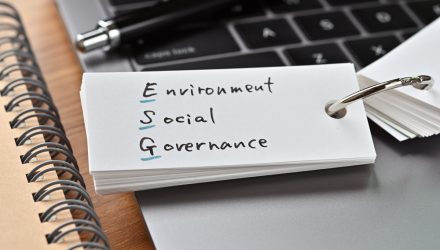It would be an understatement to suggest that labor has been in the headlines lately. Between the unemployment statistics, Labor Day, and the passing of one of the staunchest advocates for workers’ rights, Ruth Bader Ginsburg, how companies treat their workforce seems like an important topic.
Yet, there’s a potential push to make it illegal to take something like how a company deals with labor into account in your investments. The Department of Labor has recently reminded anyone running an ERISA qualified retirement plan that “must never sacrifice investment returns, take on additional investment risk, or pay higher fees to promote non-pecuniary benefits or goals.”
This guidance comes as investors have genuinely started adopting funds focused on Environmental, Social, and Governance issues with $20 billion coming into 146 funds just this year alone. It also flies in the face of common sense. Pensions and endowments and individuals and advisors make decisions every single day that involves paying too much, taking too much or too little risk, for non-pecuniary benefits or goals. Taken to the extreme, such guidance would force religious organizations to invest in companies counter to their beliefs, whatever they may be. Nearly every church pension group I’ve ever looked at has explicitly stated non-pecuniary goals for their plans and has for decades.
The SEC, for its part, has had opportunities on both sides of the ESG issue to weigh in, yet has remained mostly silent. They passed up the chance to require more disclosure of what we might call “ESG Fundamentals” — measures of climate risk, diversity, and so on.
However things shake out, it strikes me as unlikely the government will start reaching into every fiduciary relationship and mandate precisely how to manage portfolios — to do so would require acknowledging that, for example, there are still billions upon billions of dollars trapped in massively overpriced and poorly managed vehicles of all types, and thus singling out, say, the appropriateness of the Global X S&P 500 Catholic Values ETF (CATH) or the Xtrackers MSCI USA ESG Leaders Equity ETF (USSG).
And I believe that many investors and advisors are starting to realize one critically important fact about ESG: it’s not about tree-hugging, it’s about risk management. There’s little doubt the climate is changing, and companies that don’t plan for that will suffer. Non-diverse companies perform worse. Diverse companies generate more profits. Don’t believe me? Start with this groundbreaking McKinsey study and move on to the dozens of studies that have kept proving the point.
Staying On The Level
I’d go so far as to say that a complete head in the sand approach — ignoring EVERYTHING related to environmental impact, labor, social issues, and how a company is run and regulated is nearly a criminal abdication of a fiduciary relationship. Since its launch in June last year, the ESG-version of the S&P 500 (Xtracker’s SNPE) has beaten the plain-vanilla S&P 500 by over 4%. Since it’s November 2018 inception, the ESG-version of EAFE (Xtrackers EASG) has beaten the plain-vanilla EAFE by over 6%. In both cases, with a lower standard deviation.
“But, Dave!” I hear you say. “Short time periods! Sample sizes!” And yes, those are all true; however, stocks, like gold, are still subject to supply and demand. Whether you believe or care about ESG is irrelevant if ESG-friendly stocks start simply outperforming because investors are willing to pay a bit more for them, which is clearly becoming the case.
So, where do you start? Well, there are a ton of great resources out there. A few of my favorites MSCI’s effort at education, conveniently located at ESG101.com, and the broad swath of resources available from the CFA. But ETF issuers are making waves in their own ways too, and you should probably at least be aware of what the funds you may already own are doing. Blackrock’s Larry Fink, for example, has been extraordinarily vocal about their role in proxy voting and corporate governance. State Street Global Advisors has made a similar stand on how they’re voting for board slates, and of course made a huge ripple with their “Fearless Girl” marketing on Wall Street.
But in writing up this piece, I was excited to see an initiative from NYLife launching as well — the Pledge. The idea is pretty simple — commit to having just one conversation a week with a client about ESG investing, and they’ll give you a toolkit to help. And to sweeten the pot, they’ll invest in 1-ton of carbon offsets for every conversation advisors commit to having, up to 10,000 tons. (You can find out more at https://www.morethaninvesting.com/takethepledge.)
Whether you’re a die-hard ESG proponent or a skeptic, it doesn’t actually matter. ESG investing is here, and it’s not going away. You can make a choice to turn away the clients for whom this is going to be a big deal, or you can learn, adapt, and help them reach their goals. The choice is yours. But what would it hurt to take the pledge and talk to your clients about it?
For more market trends, visit ETF Trends.

